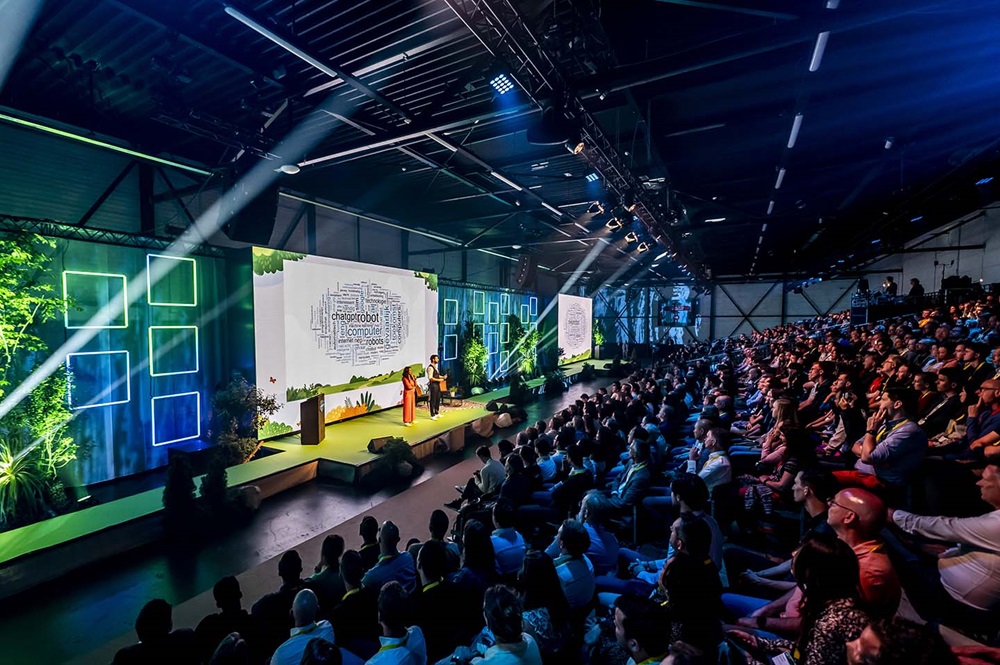There are many factors to consider when installing an LED video wall. While LED video walls can make a stunning impression and have a significant impact on an organization, they require thorough planning before implementation. After all, video walls can be scaled to almost any size and shape, providing great flexibility. In addition, you must take into account cost, space, power, and positioning. However, the extra effort is worth it because few technologies can grab attention as effectively as an LED video wall.
Why Should Organizations Consider an LED Video Wall?
Video walls are suitable for various occasions and can display a wide range of information. In short, they are considered a compelling option by organizations in many industries for the following reasons:
Unparalleled Visual Impact: People are highly visual, and research shows that outdoor digital advertising attracts more attention and holds it longer. Bright, animated images are captivating in most situations, and LED video walls can present such content on an unmissable scale.
Versatility: A video wall is, first and foremost, a communication tool. No matter what your organization chooses to communicate, a video wall is an ideal medium. Whether it’s new menu items, upcoming promotions, public relations content, or directions to nearby attractions, an LED video wall can get the job done.
Efficiency and Effectiveness: Earlier display technologies, such as LCD, also used LED lighting but not to the extent of modern LED video walls. In today’s LED displays, LEDs directly generate the image, making it brighter. LEDs are known for their durability and energy efficiency. They can provide stable lighting for years before needing replacement, requiring minimal maintenance in the meantime. Additionally, their energy efficiency reduces operating costs, which is especially important for displays expected to run 24/7.
While there is much to praise about LED video walls, there are several considerations to keep in mind before starting a video wall project.
Five Things to Remember When Planning an LED Video Wall Project
An LED video wall is a massive undertaking both physically and logistically. However, if your organization is prepared, there should be no surprises. Here are five key questions to help you get ready:
What type of display do we need?
LED video walls come in many configurations, and there’s likely one that fits your exact needs. First, ensure that your video wall uses commercial-grade displays only. Commercial displays feature superior heat management and are designed for 24/7 operation. Some LED video walls can be installed outdoors, while others can be shaped into almost any imaginable configuration. For example, Samsung’s The Wall can wrap around corners or even an entire building. LED display no longer have to feature the grid-like borders that once characterized the technology.
Where will the video wall be installed?
The main consideration for your organization’s LED video wall project is location. The placement of the video wall will greatly influence its overall effectiveness, so choose a high-traffic area. Also, don’t forget about pixel density when positioning the video wall. Pixel density refers to the number and size of pixels in the display, which will significantly affect the wall’s appearance. If your video wall has a lower pixel density, it’s better to install it at a distance. The higher the pixel density, the clearer the image appears up close, so consider installing it where people can approach and view the full image.
What kind of content will the video wall display?
Video walls can display anything from text-heavy information to complex animations. Content drives technology, so the content your organization plans to use will determine how to make the most of your video wall. For example, if your organization favors animations and other visuals, your video wall will be effective at most distances and in larger sizes. If your video wall will be displaying text, schedules, etc., minimize the distance between the display and viewers.
How accessible is the video wall?
Accessibility here refers to two things. First, it’s important that the LED video wall does not obstruct walkways or violate any ADA (Americans with Disabilities Act) regulations. Even something as simple as how far the video wall protrudes from the wall can intersect with ADA compliance. Second, while LED lighting is the most durable and reliable on the market, occasional adjustments are needed to maintain the video wall’s pristine appearance. Therefore, any video wall must be installed in a location that’s easy to maintain. Is there space behind the wall to access cables? Is there enough room for heat dissipation? What happens if a section needs to be shut down for maintenance? These details must be considered before installing an LED video wall.
Who will install and maintain the LED video wall?
Video walls are a project for specialists. There’s a lot of hardware to handle, configurations to manage, and small details to ensure proper integration. That’s why most organizations turn to certified AV integrators to oversee the planning, installation, configuration, and maintenance of LED display screen. Certified integrators will customize the design based on the intended installation space, select the right components and displays for the job, calibrate everything for ease of use, and provide long-term maintenance as needed. This ensures your organization’s video wall is as visually appealing and durable as possible.
Post time: Oct-14-2024

